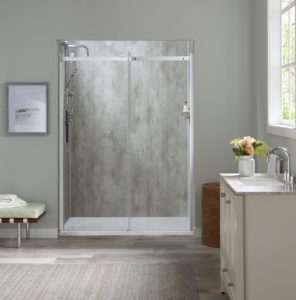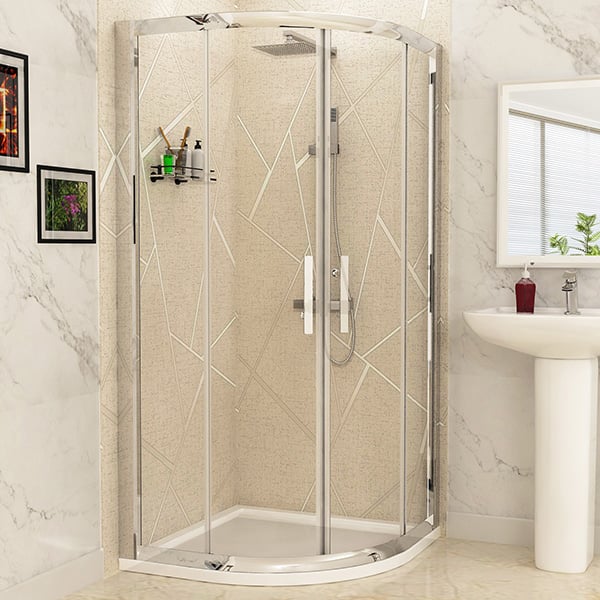Easy-to-follow Guide to Installing a New Shower Unit
Easy-to-follow Guide to Installing a New Shower Unit
Blog Article
Almost everyone maintains their own perception involving Simple ways to Install a Shower Cubicle on Your Own.

A successful shower installment needs cautious planning and a lot of work. Most of the times, you will need to do three kinds of jobs: mounting walls, setting up the plumbing, and also ending up wall surfaces.
Different Sorts Of Shower Units
Most Usual Blunders
Preparation.
First of all, you have to select the sort of shower that you desire to set up. It is necessary to identify whether the chosen shower can coping with certain systems as well as can control a secure degree of water through the boiler. Many shower devices nowadays are designed to be flexible to different water stress (such as kept warm water and also cool keys).
It is also vital to think about the water pressure as well as the preparation of the piping as well as water drainage for the shower.
Approach.
Depending upon the sort of shower you want to install, the shower head must either be suited order to prevent its contact with the water in the bath below or the base tray, or it needs to have a check shutoff.
Prior to beginning, it is a good idea to note the settings of the shower head as well as control, and to intend the pipe-work entailed. Additionally, the water drainage system to eliminate the drainage will certainly require to be intended. Both settings of the cord course as well as the shower switch will also require to be thought about if an instant or electric shower unit is being mounted.
Utilize the instruction guide given with the shower unit to fit the shower control.Before suitable the pipes that will supply the water to the shower system, it is important to cut off the water system. In order to secure the pipelines, they need to be offered a water-proof covering as well as also fitted with separating valves. The pipelines can after that be hidden into the wall surface and also smudged over to neaten the total appearance.
Fit the base tray, shower head, as well as installations.
Connect the major shower control to the pipes that will be supplying the water (This might need a women screw string adapter).
Reconnect the water as well as test the pipes for any type of leaks, as some might require firm.
If you are setting up an electric shower, bear in mind to turn off the electrical power supply before making any kind of electric links. When these links have been made (there must be guidance within the user's manual), the power supply can be changed back on.
Adjusting Water Pressure to Fit Your Shower.
The cold water tank can be lifted to a better elevation (often just 150mm (6inches)) by fitting a strong wooden assistance underneath it - perhaps composed of struts and blockboards. If you select this option, the major and distribution pipelines will additionally need to be elevated to meet the new height of the storage tank.
Conversely, a booster pump (a single pump or a dual/twin pump) can be fitted. Whichever type is selected, it should be linked right into the power supply in order to operate.
Piping as well as Drainage.
It is best to utilize 15mm diameter supply pipelines, and also make the go to the shower as brief as well as straight as possible so regarding preserve maximum pressure as well as reduce warm loss. Additionally, by reducing the use of elbows for pipe edges, you can lower the resistance in the flow of the water supply. You can achieve this by bending the pipes instead.
How Do You Install a Shower? Follow This Guide
Installing a Shower at a Glance
Tools & Materials: Level, electric drill, caulk, hole saw, cedar shims, shower unit Step 1: Drill pilot holes Step 2: Prep fixture holes Step 3: Move unit into place Step 4: Caulk corners and base Step 5: Attach door Step 6: Install shower pan Whenever plumbing is involved in a DIY project, people worry about what might go wrong. The truth is that installing a shower isn’t that complicated, and you can save a lot of money by doing it yourself. You shouldn’t need to make any alterations to your plumbing to complete the job, and most of the tools you need will be provided in your new shower kit.
Can I Install a Shower Myself?
Even if you’ve never installed a shower before, you’ll find this to be a project that is perfectly suited for DIYers with a moderate level of experience. Whether you're doing a bathtub conversion or installing a new stall, most of what you need comes in shower kits that you can purchase from a hardware store. The first thing you need to do is determine what type of shower stall you want.
Single-panel stalls are the easiest to install because they come preassembled. All you need to do is put them in place. Multi-panel showers require a few additional steps, but you’ve got more control over the appearance of your unit. Multi-panel units are also much easier to handle if you’re going to do the installation without any help.
Be sure to take all appropriate safety precautions, such as wearing eye protection and gloves. When you’re removing or installing a shower unit, you might kick up debris that could hurt your eyes. You’ll also need to work with equipment that will get extremely hot, so be sure to have safety gloves handy.
Tools and Materials
2- to 4-foot level Electric drill with a 1/8-inch drill bit Caulk 2-inch hole saw Cedar shims The unit itself Before You Begin: Prep the Space
It’s highly important to measure your space accurately before putting the stall in. Measuring from the floor upward and from each corner outward will ensure you’ve got the right measurements. What you’re looking for is where the plumbing apparatuses are going to come through the stall. Transfer these measurements over to the back of your unit by drawing the locations of these holes using a pencil or marker.
Pull out your old shower and make sure to scrape off all the old caulking. Be thorough because you want to work with smooth surfaces for the best installation. Once you’ve pulled out your existing shower, you need to make sure that the floor is clean and dry. The best way to clean debris is with a shop vacuum, as it’ll soak up water and dirt together.
If you’re experiencing any plumbing issues, such as low water pressure, this is a perfect opportunity to solve them. Make sure that the pipes themselves are not in need of patching and clean your showerhead. When you turn the water back on after your project, check the pipes for signs of wear or disrepair. Anything beyond minor repairs should be handled by a plumber, and this is the best time to bring in a professional.
If the floor has any moisture at all, don’t proceed until it’s completely dry. The last thing you need is for the floor to rot or invite mold and mildew into your base. Once everything is dry, apply waterproof wallboard to the walls. This can be attached with screws or nails, then sealed with caulk so that water doesn’t seep into any crevices.

I ran across that post on How to Build a Shower Enclosure for Your DIY Bathroom while doing a lookup on the search engines. Do you know about somebody who is looking into How to Install a Direct-to-Stud Shower Enclosure? Please feel free to share it. Kudos for your time. Don't hesitate to stop by our website back soon.
Information Report this page